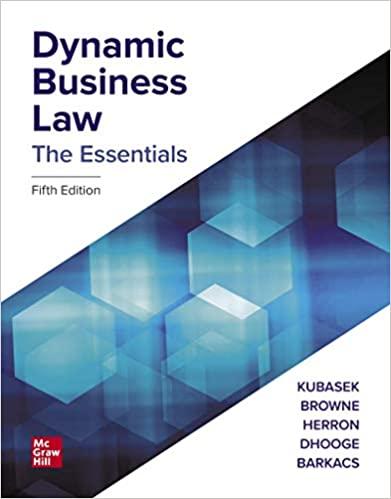In 2000, Donald Stern incorporated a startup company named Grail in order to market a new and
Question:
In 2000, Donald Stern incorporated a startup company named Grail in order to market a new and revolutionary chip design that Stern had invented. While witnesses expressed the view that Stern’s innovation would be the “Holy Grail of memory technology,” the company was unable to find investors, and by March In 2000, Donald Stern incorporated a startup company named Grail in order to market a new and revolutionary chip design that Stern had invented. While witnesses expressed the view that Stern’s innovation would be the “Holy Grail of memory technology,” the company was unable to find investors, and by March In 2000, Donald Stern incorporated a startup company named Grail in order to market a new and revolutionary chip design that Stern had invented. While witnesses expressed the view that Stern’s innovation would be the “Holy Grail of memory technology,” the company was unable to find investors, and by March 2001, Grail had run out of money. On April 19th, 2001, the following month, Stern met with Ryuichi Matsuo and Kazutoshi Hirayama, two representatives from Mitsubishi. Matsuo signed a nondisclosure agreement which required Mitsubishi “to keep in strict confidence and trust and not use, disclose or make available to others, including any of its affiliates or third parties any ’Proprietary Information’ and ’Company Documents and Materials’ (together ’INFORMATION’) without the prior written consent of [Grail].” In the meeting, Stern showed Hirayama 16 items of proprietary information, including the core concept behind his miracle memory chip, of which Hirayama took extensive notes. Nothing came from the meeting between Grail and Mitsubishi.
In 2003, Mitsubishi and Hitachi formed Renesas Technology in a joint venture. Hirayama was one of the employees transferred from Mitsubishi. Stern suspected that Renesas was using his innovations and that Mitsubishi had broken the NDA because of an article he read promoting Renasas’ new technology.
- In the ensuing 2012 trial, expert witnesses found that “of the 16 items of confidential information disclosed to Mitsubishi, 11 had been implemented” in Renasas’ new technology. On May 16, 2012, the jury found that Mitsubishi had violated the NDA and determined damages to be $123,898,889.00. Mitsubishi has filed an appeal for a new trial to address the damages, which is ongoing now. How would Mitsubishi’s violation of the NDA affect the decisions of other innovative tech companies to approach potential investors?
Which aspects of the WH process did Mitsubishi neglect in their decision to break the NDA?
Step by Step Answer:

Dynamic Business Law The Essentials
ISBN: 9781260253382
5th Edition
Authors: Nancy Kubasek, M. Neil Browne, Daniel Herron, Lucien Dhooge, Linda Barkacs





